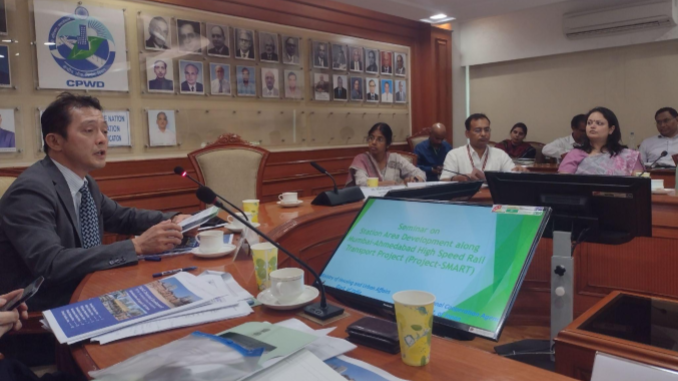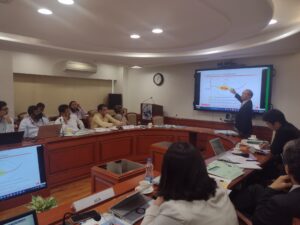
Japan International Cooperation Agency (JICA), Ministry of Housing and Urban Affairs (MoHUA), Ministry of Railways (MoR), Government of India and National High Speed Rail Corporation Limited (NHSRCL) held the first workshop under Technical Cooperation (TC) for Station Area Development along Mumbai-Ahmedabad High Speed Rail project.
More Details:
- The objective of this TC is to enhance the capacities of both Maharashtra and Gujarat State Governments, Municipal Corporations, Urban Development Authorities and NHSRCL to plan development of surrounding areas around MAHSR stations in order to enhance accessibility and convenience of commuters and other stakeholders and to promote economic activities.
- This seminar was organised by MoHUA to provide a common forum to all the stakeholders involved in this TC project to come together, understand the approaches, concepts and ways forward for this TC project.
- Mumbai Ahmedabad High Speed Railway (MAHSR) Project shall cover 508 km between Mumbai and Ahmedabad, and shall include 12 station located at Mumbai (BKC), Thane, Virar, Boisar, Vapi, Bilimora, Surat, Bharuch, Vadodara, Anand, Ahmedabad and Sabarmati.
- In the TC Project, Japanese experts will share Japanese experience and assist Indian counterparts to plan the modalities for the transit function of stations and Station Area Development.
- It is based on the concept of Transit Oriented Development (TOD) and it is envisaged to promote urban and transport infrastructure development including the access road and station plaza. Especially, Japanese experts will support Indian counterparts to prepare station area development plans for 4 stations namely Thane, Virar, Surat and Sabarmati as model stations.

- It is expected that this partnership would lead not only to development of surrounding areas around MAHSR stations, but also to promotion of Transit Oriented Development (TOD) and Station Area Development in India.
Speaking on the occasion, Mr. Saito Mitsunori, Chief Representative, JICA India Office said, “MAHSR project is a symbol of Japan-India collaboration, contributing to India’s first High Speed Rail project by introducing Japan’s High Speed Rail technology. Under the project, Japan can provide not only engineering and construction technology of High Speed Rail, but also share various experiences of Japan regarding new city planning and development around high speed rail stations. In Japan, we have various successful experiences of developing Smart and Vibrant urban areas around the stations by harmonious coordination and planning amongst different stakeholders such as railway operators, local governments, private companies and citizens in the area. Under this TC project, we would like to share these Japanese experiences and knowledge with our Indian counterparts. I am confident that both the Indian and Japanese side could work together closely for successful completion of this project.”
- JICA has been supporting the project for the Mumbai – Ahmedabad High-Speed Rail by Providing ODA loans of JPY 650,000 million (approximately INR 40,000 crore) in total since 2017.
- The objective of the Project is to develop a high-frequency mass transportation system by constructing the High-Speed Rail between Mumbai and Ahmedabad, using Japan’s Shinkansen technology (also known as the “Bullet Train”), thereby enhancing mobility in India and contributing to regional economic development.
About JICA:
- Established by a specific law as an incorporated administrative institution under the Government of Japan, the Japan International Cooperation Agency (JICA) aims to promote international cooperation as the sole Japanese governmental agency in charge of ODA implementation.
- JICA is the world’s largest bilateral donor agency. JICA works as a bridge between Japan and emerging countries, and provides assistance in the form of loans, grants and technical cooperation, so that the emerging countries can strengthen their capabilities.
Source: JICA- Press Release | Images Credit: JICA

